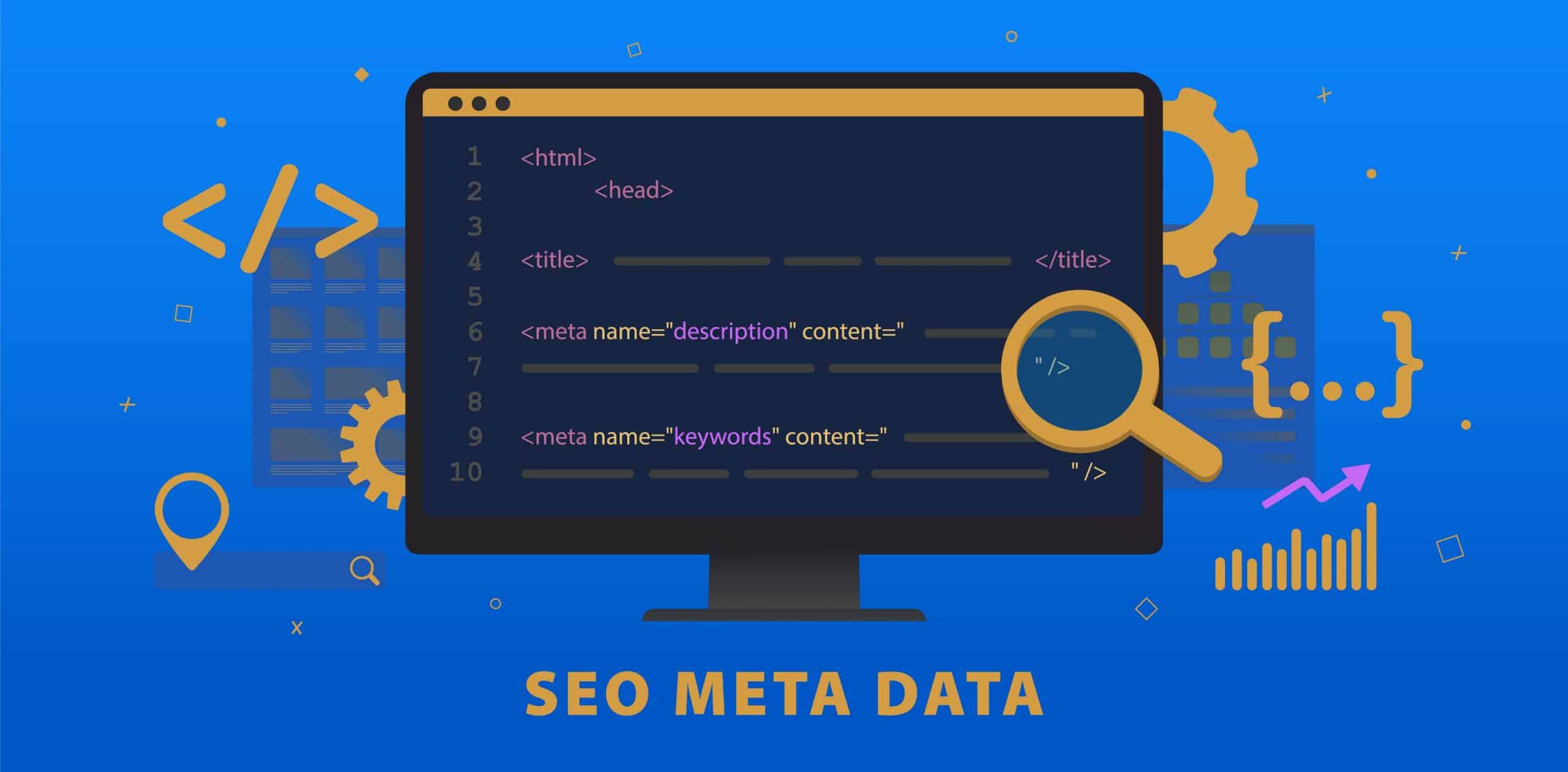Meta tags are reference information that allows search engines to know what your web page is about in order to rank it in searches. The better you optimize them, the better results you will get.
What are meta tags?
Meta tags are HTML codes that are used to provide more information about a web page. They are placed inside an HTML document.
Browsers and search engines use meta tags to better interpret the data on a page. These tags cannot be seen by a normal user, because their purpose is to include reference information such as: author, date, title, description, etc. so that search engines can better understand the web page.
Are they important for SEO?
Meta tags are important for SEO because some tags are used to improve search engine ranking.
Remember that the purpose of meta tags is to include reference information. Search engines rely on this information to know what the content is about and how to relate it to certain searches.
Imagine that you have a web page and the meta title (title of the web page) has the keyword “Weight loss guide”. This data serves as a reference for the search engine to show it to users when they search for “weight loss guide”.
The more the reference information matches the user’s search, the more exposure you will get in the search results.
Conclusion
Meta tags are used to your advantage in altering the ranking of a web page. If you manage to optimize your web page meta tags you will rank better than your competitors who do not optimize them.
The most important meta tags for SEO
Here is a list of the most important meta tags for ranking:
Meta Title
Indicates the title of the web page, this will be seen in the search results, so it is the first thing users will see before entering your web page. It can also be seen at the top of browser tabs.
SEO recommendation: Use it for the keyword you want to rank for. On the other hand, as this is the first thing they look at before accessing: make it persuasive. This way users will be more attracted, and instead of going to your competition, they will visit your page. In other words, you will increase your CTR.
Meta description
It shows the description of the web page without looking at the content. Search engines use it to show it in the search results, so it is the first thing that users see, just like the meta title.
SEO Recommendation: It does not influence SEO, but it does influence CTR. The higher the CTR, the more visits you will get. The more visits, the more opportunity to rank.
In conclusion, it influences SEO indirectly. And, just like the meta title, make it persuasive, since this is the first thing people look at before accessing. Tell the user what he is going to get, convince him not to go for your competition.
“h1, h2, h3, h4, h5, h6” Tags
These are the headings of the content, and are used by hierarchy. Just like a book has a main title that goes on the cover, it also has chapter and subtitle titles.
- H1 would be the main title.
- H2 would be the chapter title
- H3 would be the chapter subtitle.
- The headings go up to level 6.
SEO recommendation: Each heading should point to a keyword derived from the main keyword.
If you search for “What is an iPhone”, you may also be interested in “The features of an iPhone”, and also “Is it worth buying an iPhone?”.
These are questions that can be searched individually in search engines. But since the questions are closely related they should be placed in the same article.
This way the article ranks for each of those keywords, and in turn, is a more complete, higher quality and useful article.
Leading to this:
- H1 What is an iPhone 13
- H2 iPhone 13 models
- H2 Features of an iPhone 13
- H3 Cameras
- H4 Front Camera
- H4 Main Rear Camera
- H4 Rear Night Camera
- H3 Display
- H3 Battery
- H3 Cameras
- H2 Is it worth buying an iPhone 13
It is important that a page can only have one H1, main title.
On the other hand, well-crafted titles help the user find the information faster, thus aiding the user experience, which, in turn, helps with ranking (SEO).
ALT tag
The ALT tag is the image attribute that helps describe what the image is about. This tag does not come with the image, you have to set it manually.
SEO recommendation: Search engines don’t know what the image is about. Using the ALT tag helps Google understand what the image is about. Use a keyword in each ALT tag, this is useful for ranking in Google Images.
Canonical tag
This tag is used for explaining to search engines what the original page is, in the case that your website has similar content.
For example, imagine an online store that has several pages talking about the same product. The only thing that changes is the color of the product. How does Google know which one ranks and which one doesn’t if they all look alike? Well, that’s where the tag explains to Google which page is the most relevant to you and, therefore, should rank.
SEO recommendation: Use it to signal Google which page to rank when the content is very similar or the same. This will prevent you from ranking problems.
Robots meta tags
This tag is used to signal search engines which pages should be indexed and which should not. That is, which pages are going to be shown in searches, and which are not. In this tag we have:
Index/noindex: Signals to search engines whether we are going to show the page (index), or we are not going to show it in search results (noindex).
Follow/nofollow: It signals search engines whether the links of the web pages are to be tracked (follow), or not to be tracked (nofollow).
SEO Recommendation: Make sure you have these tags enabled if you want your content to be displayed in search results. And for content that you do not want to be shown, deactivate them.
Conclusion
If you want to rank it is important to know how to optimize meta tags correctly. Optimizing them correctly helps you to improve your click per view, exposure and organic traffic.
Using headings for each keyword has two functions. First, to rank that heading for a particular type of search keyword. Second, to improve the user experience, making it easier for the user to navigate.
Make sure you get the meta robots right since these tell Google which web pages are going to be displayed and which are not. If they are not shown you will not get organic traffic.




